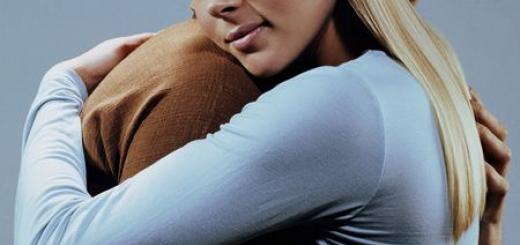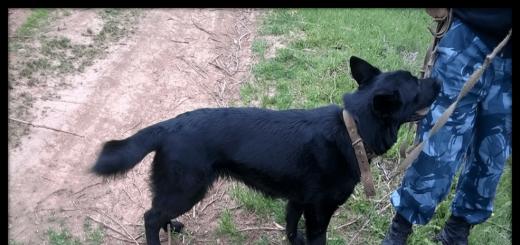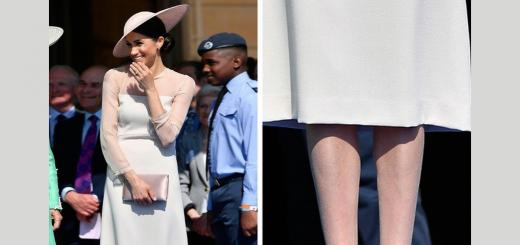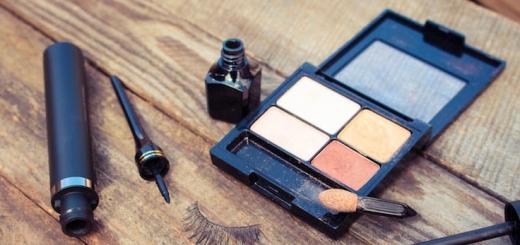You can combat medical problems of the feet and nails not only with the help of ointments and creams, but also with cosmetic methods. Pedicure is the removal of an ingrown toenail in a simple and painless way, as opposed to medical intervention.
Pedicure - removal of ingrown nails:
- Ways to deal with the problem.
- Cosmetic methods for treating ingrown toenails.
- Prevention of ingrown nails.

Ingrown toenails are a fairly common and very painful medical problem. It is expressed in the ingrowth of the nail plate into the soft tissue around it. This is usually observed on the big toes. The consequence of ingrowth is redness and inflammation of the soft tissues, severe pain both with pressure and in a calm state. If the situation is advanced, suppuration may appear.
The causes of ingrown nails are varied: heredity, poor hygiene, fungus, tight shoes, incorrect posture, gait, foot placement, injuries, bad pedicure.
The first symptoms of the problem are redness around the nail, accompanied by pain when pressing and walking. In this case, you need to immediately find out the cause and begin treatment so as not to start the disease before suppuration appears.
Ways to deal with the problem
There are two main ways to deal with ingrown toenails - medical and cosmetic.
The first method means that it is medicine that will come to the rescue in the fight against the disease. This includes cases where the cause of an ingrown toenail is a fungus (which is treated with antifungal ointments) or the situation is so advanced that the nail plate has to be surgically removed.
And the second method is precisely pedicure - removal of an ingrown nail. The specialist will properly treat the skin, prevent the progression of the disease and perform prophylaxis, but he can only help if there is no suppuration in the affected area.
Cosmetic methods for treating ingrown toenails
Those who suffer from ingrown nails are recommended to systematically undergo a hardware pedicure. During the procedure, the master will treat the skin with special softening compounds and the nail plate with rotating attachments. They will carefully remove rough skin and excess areas of the nail, and perform gentle sanding. Thus, the integrity of the skin and nail will not be compromised.
In addition, pedicure - removal of ingrown toenails is often done using special cosmetic techniques. Their essence comes down to attaching attachments to the nail, which correct the position of the nail plate. After some time, the problem disappears completely.
. Plate application. This can be a gold, plastic, duraplastic or metal plate, which is attached to the nail with glue and staples. The plate prevents the lateral edges of the nail from deepening into the soft tissues, and when worn for a long time, it completely corrects the position of the nail.
. Staple application. Its curved edge goes under the damaged edge of the nail. The structure is secured using a special pad, which is glued to the nail plate from above. The procedure is used for correction if ingrowth is observed on only one side.
Prevention of ingrown toenails
To avoid having to use pedicure as a means of combating ingrown toenails, you need to follow preventive measures.
Firstly, you should not wear shoes that are too narrow and tight, and also expose your toes to systematic injuries.
Secondly, hygiene procedures should not be neglected. Foot baths, especially with salt or oak bark, are the best prevention of fungus.
Thirdly, you should remember about precautions in public places: in a common shower, bathhouse, or on the beach, you should use rubber slippers.
Fourthly, you must not injure the skin around the nail plate and the nail itself, cut it too short, especially at the edges.
The problem of an ingrown toenail must be solved immediately, so as not to treat purulent inflammation later and not turn to surgeons.
Hardware pedicure is a method of painlessly removing calluses and corns using a special apparatus with rotating instruments. This pedicure allows you to solve the problem of ingrown nails, nail and skin fungus, etc.
Head of the Medical Center for Podology and Osteopathy, Tatyana Nikolaevna Krasyuk
Price
| Name | Cost, rub.) | ||
| Podologist consultation | on Usievich | Level 1 specialist | 2300 |
| Level 2 specialist | 2500 | ||
| Level 3 specialist | 3000 | ||
| on Pokrovka | Level 1 specialist | 3000 | |
| Level 2 specialist | 4000 | ||
| Level 3 specialist | 4000 | ||
| Hygienic hardware pedicure | on Usievich | Level 1 specialist | 4500 |
| Level 2 specialist | 4900 | ||
| Level 3 specialist | 5850 | ||
| on Pokrovka | Level 1 specialist | 6650 | |
| Level 2 specialist | 7800 | ||
| Level 3 specialist | 9000 | ||
There is no need to steam your feet before the procedure. Therefore, hardware pedicure is also called “dry”. This is its main difference from the classic one. Due to the fact that the stratum corneum of the skin is not softened by water and does not swell, the specialist can accurately determine the area and depth of the surface to be treated.
Contact the Tatyana Krasyuk Center for Podology and Osteopathy - hardware pedicures are performed here only by highly qualified specialists with medical education. The procedure is carried out only on specialized licensed equipment in strict accordance with all rules and regulations, so it is absolutely safe for the patient. Our specialists take on any, even the most advanced cases. And if during the procedure the specialist notices any related problems, he will immediately offer options for solving them.



Indications for use
Hardware pedicure is suitable for both basic foot care and for the treatment and prevention of a wide range of diseases:
- mycosis - fungus of the skin and nails;
- hyperkeratosis - thickening of the skin due to an increase in the rate of cell division of the stratum corneum and at the same time a violation of their desquamation;
- cracks in the feet;
- core calluses that have a depression in the center and are painful when pressed;
- plantar warts;
- hyperhidrosis - increased sweating;
- ingrown nails;
- diabetic foot syndrome, etc.
Performing a pedicure
The hardware pedicure procedure consists of several stages. Their number depends on the condition of the skin of the patient’s feet and nails:
- A skin antiseptic is applied to the patient's feet.
- If there are thickenings on the nail plates, they are removed using cutters - special attachments for pedicure.
- The nail folds are then carefully filed away using rotating tools.
- The horny part of the cuticle is not cut off, but sawed off to reduce the risk of disruption of the protective functions of the cuticle.
- Keratinization and periungual calluses at the lateral edges of the nail plate are cut off with thin cutters.
- Using a special cutter, the nail is given a normal anatomical shape.
- Excessively overgrown skin between the fingers is removed with medium or fine abrasive diamond cutters.
- Various tools are used to treat the skin on the heels depending on the problem. If the skin on the patient’s heels is thick and has corns and cracks, special professional softeners can be used to soften them.
- The specialist chooses a tool for removing calluses depending on the type of calluses and their location.
When the procedure is completed, a cream or balm is applied to the feet, which is selected individually for the patient depending on his skin type. Then the specialist applies medical protective oil to the skin to give elasticity to the nails and soften the skin around them.




The advantages of such a pedicure
The undeniable advantage of hardware pedicure is the low risk of injury. This is especially important for patients with diabetes - for them any other pedicure technique is contraindicated. Diabetics have reduced sensitivity, which significantly increases the risk of skin trauma.
The procedure is absolutely safe, since disposable instruments are used during it - the likelihood of transferring infection from one person to another is reduced to zero.
And, of course, it is worth noting that there is no need for preliminary preparation for a hardware pedicure. This procedure does not take much time, which is very convenient.



Ingrowth of the nail plate into the soft tissue around the nail is more common on the big toes. However, it can also affect the nails of adjacent toes. The occurrence of this disease can be caused by heredity; it has been noted that the problem of ingrown toenails is more common among people who have family ties. In addition to the heredity factor reasons contributing to the appearance of such a problem as ingrown toenails should include:
- Wearing incorrectly fitted shoes. Tight shoes made of non-breathable materials contribute to this pathology. Particular attention should be paid to wearing high-heeled shoes.
- Improper nail care, namely cutting and rounding the corners of the nail plate during trimming. Children often make this mistake, so it is important to teach children how to cut their nails correctly from childhood.
- Anatomical features of the structure of the toes. Wide fingers, convex nails.
- Flat feet.
- High loads on the foot, especially with weak connective-muscular apparatus of the feet.
- Incorrect growth of nails after an injury or fungal disease.
Attention
The first sign of a problem is the feeling of mild pain while walking or running. If you develop an ingrown toenail and do not address the issue, the result may be swelling and redness of the tissue, followed by the formation of a purulent-inflammatory process with the appearance of bleeding areas.
Ingrown toenail treatment
The method for correcting an ingrown toenail is selected depending on the degree of development of the disease. The most radical of them is surgical removal. Surgical method is the most traumatic and requires a long recovery period. It is usually used when it is impossible to resort to other methods and is performed by a surgeon.
Non-traumatic methods include:
- Correction of an ingrown nail by performing a hardware medical pedicure.
- Installation of corrective staples and plates on the nail (Frazier staples, Podofix plates, BS, etc.)
- Application of capolin.
The last two methods are aimed at changing the radius of curvature of the nail to correct its subsequent growth.



Information
The photo shows the installation process of the Podoxif and 3TO correction systems; both systems are non-traumatic, do not require a recovery period and do not impose restrictions on daily activities.
We perform correction of ingrown toenails only using non-traumatic methods treatment.
These methods are most effective for the first and moderate severity of the disease. Therefore, if you have such a problem, you should not delay solving it and lead to surgical intervention.
Make an appointment with a specialist podiatrist in any way convenient for you. To contact and make an appointment, use instant messengers, the feedback form from the website, Instagram or a phone call.
Every day our feet endure heavy loads, which are also accompanied by such inconveniences as wearing uncomfortable shoes, insufficient ventilation (airing) and temperature changes.
All of the above factors create not only inconvenience for your feet, but also favorable conditions for the appearance of such an unpleasant disease as onychocryptosis - ingrown toenails.
- This is the ingrowth of the nail plate into the soft tissue of the periungual fold. Most often, the development of onychocryptosis occurs on the big toes. It is accompanied by swelling/edema of the soft tissues of the sore finger, painful sensations (often sharp), changes in skin color (blueness, redness) and accumulation of purulent fluid in the soft tissues of the nail fold.
One of the effective ways to treat/eliminate this disease is a medical pedicure for ingrown toenails.
Before starting treatment, it is necessary to understand the causes of onychocryptosis:
- wearing uncomfortable shoes;
- failure to comply with hygiene standards;
- infectious pathogens (fungi);
- hereditary predisposition;
- received injuries to the toes;
- impaired blood flow, causing swelling;
- improper performance of the pedicure procedure.
Medical pedicure (hardware) – This is a certain set of procedures, the action of which is aimed at solving medical problems (fungal infections, ingrown nails, thickening of nails) and general foot care (heel cracks, calluses, hyperkeratosis and others).
The main advantage of using a medical pedicure procedure for ingrown toenails is protection against the transmission and further spread of infection, minimizing trauma to healthy areas of the skin and painlessness.

Pedicure for an ingrown toenail involves one of the following procedures:
- application (imposition) of a gold plate;
- using a fiberglass-coated plate;
- Onyclip plate application;
- application of the COMBIped technique;
- use of the Podofix plate.
Let's take a closer look at some of the above options.

Gold plate overlay
In the case of ingrown nails on only one side, a plate with one bend is installed and, accordingly, if the ingrowth occurs on both sides, then a plate with two bends is used.
When the inflammation has sufficiently spread to the soft tissues of the periungual fold, it is allowed to use the plate without bending (using the gluing method).
Is your nail thin and small? No problem! For such cases, the use of a special gold thin plate is provided.
There are asymmetrically shaped nails - for them, the use of two half-plates is provided.
As you can see, the solution/treatment of the emerging pathology does not cause any difficulties in the modern world of medicine and cosmetology!
Using a glass fiber covered plate
This plate has springing properties.
It is attached to the surface of the nail to create free space between the edge of the nail and the lateral soft tissues.
Onyclip plate application
It has an epoxy coating. She is appointed. When there is significant sensitivity of the periungual fold (to reduce pain). The plate itself is glued to the surface of the nail, ensuring that the nail fold is raised from the surface of the nail plate.
Application of the COMBIped technique
It is used to correct ingrown nails on one side only, accompanied by inflammation of the periungual ridges.
The method involves inserting a metal staple under the surface of the nail plate on one side and fixing the plastic part of the plate on the other side.
Application of the Podofix plate
This method consists of two operations. The first is fixation, using special glue, of an elastic plastic plate to the surface of the nail. The second - the same plate is attached to the nail using a specially designed metal wire.

Stages of the disease
According to the degree of development, the disease is divided into three stages:
- light;
- average;
- heavy (neglected).
Symptoms of a mild ingrown toenail
When walking, a slight discomfort is felt, the area of the periungual fold is swollen.
Treatment methods
Regularly, approximately once a month, visit a specialist who practices medical pedicure. During the procedure, periungual horny growths (ingrown nails) will be gradually removed, and the free space will be filled with a special pad for the period of adaptation.
Symptoms of a moderate ingrown toenail
When walking, there is severe pain for a long period of time, and there is a feeling of pressure on the nail plate along the edge of the nail bed. The soft periungual tissues are noticeably enlarged, swollen and moderately painful when touched.
Treatment methods
Seek help from a pedicure specialist for ingrown toenails. The treatment procedure will take place by applying a specially selected plate, which will prevent further curling and ingrowth of the nail into the periungual fold.
The installed plate is hardly noticeable and practically does not interfere with the process of walking, and does not create pain.

Symptoms of a severe ingrown toenail
Constant sharp pain, increasing when walking, severe swelling of the periungual fold, the process of loosening of the nail has begun, the nail itself is modified, there is an accumulation of purulent fluid in the soft tissues of the periungual fold.
Treatment methods
Treatment should only be carried out by a specialist. Having diagnosed a severe degree of ingrown nail, he will prescribe appropriate treatment (possibly cauterization/evaporation of purulent accumulations and the diseased part of the nail). After this, it is necessary to regularly attend hardware pedicure procedures in order to prevent the disease. To prevent a new development of onychocryptosis, special plates are temporarily installed (which one will be decided by a specialist).
We have already said that ingrown toenails can occur due to the spread of a fungal infection. So here it is. The spread of this infection can also be prevented and the fungus itself can be cured by resorting to a medical hardware pedicure procedure.
With this type of disease, it is necessary to monitor the sanitary and hygienic standards of the room in which the action will be carried out, and the sterility of the instruments used. All this should be in conditions comparable to a surgical operating room.
Why is it so necessary to monitor sterility and order so strictly? It's quite simple - to prevent spread to healthy areas of the body.
When treating this infection, special highly concentrated, and definitely disposable hardware attachments.
Proper foot care after a medical pedicure
It is recommended to have medical pedicures regularly (1-2 times a month). In the periods between procedures, take care of your feet yourself. Observe the rules of hygiene, both the feet and shoes. It is strongly recommended to use specially designed care products (ointments). Periodically take preventive medications prescribed by a specialist.

Features of the body that you need to pay attention to before prescribing and performing a medical hardware pedicure
The presence of a disease such as diabetes mellitus in people becomes a significant obstacle in the treatment of ingrown toenail pathology. Many existing procedures are prohibited from being performed with such a diagnosis, but not medical pedicure.
However, real professionals should work with patients with diabetes and with great care. In people with this disease, the sensitivity of the lower extremities is significantly reduced and the blood flow to the toes is impaired.
The specialist performing the pedicure procedure must carefully monitor the force of contact of the working tool to the patient’s skin. Even small touches of an instrument heated during operation can cause burns in the patient (this is due to decreased sensitivity of the limbs and thin skin).
Modern technologies of hardware medical pedicure will help you painlessly and effectively treat ingrown toenail pathology. Do not neglect visiting specialists in this service sector; it is better to prevent a disease than to treat it later!
Conclusions:

Are you really happy with life with this disease? With its side effects? Are you ready to endure itching, hiding your feet from others, suffering from pain, losing your nails?
After all, a solution has long been invented, a drug that has saved thousands of people from such suffering -
Medical pedicure is a special procedure performed by a specialist with medical education in cases of problem feet. Unlike a regular pedicure, where only the appearance of the feet is improved, medical hardware is aimed at improving overall health and eliminating problem areas on the feet.
It includes the following areas:
- treatment of nail fungus using antifungal therapy;
- treatment of hyperkeratosis – pathological skin growths;
- treatment and removal of core calluses - only a specialist podologist will be able to correctly cut out the dead area of skin.
Not all beauty salons offer therapeutic medical pedicures. This is a rather complex and painstaking procedure, so you should carefully choose both the studio where these services will be provided and the choice of a specialist. Only a professional with appropriate qualifications and experience will be able to identify the presence of certain foot diseases and carry out prevention.
Ours has all the necessary tools to carry out the procedure. Modern equipment and all the necessary cosmetics are presented, as well as highly qualified certified professionals - all this gives a 100% guarantee of excellent results.
A pedicure device will help eliminate calluses, corns, and skin growths with fungus. Dry feet are always treated carefully, which prevents microtraumas. The cosmetics used will help cope with excessive sweating of the feet, fatigue and will perfectly soften the skin.
What does the technique include?
- A consultation with a podologist, during which the doctor will identify the causes of a particular pathology.
- Diagnostics.
- Drawing up a treatment and care plan.
- Treatment of the foot and elimination of pathology or inflammation that will be identified during diagnosis.
- Drawing up recommendations for caring for problem areas of the legs at home.
- Attend the next procedure according to the prescribed treatment schedule.
In our beauty studio, consultations on foot care are available with the possibility of purchasing the necessary therapeutic products.

Performing hardware medical pedicure in our studio
- first, an antiseptic is applied to the client’s feet to destroy microorganisms so that during further processing they cannot penetrate microcracks;
- if the patient has thickened or deformed nails, a special cutter is used that will level the surface and give the nail the correct shape;
- the horny part of the cuticle is not cut off, but filed, it is not injured;
- A very important feature of the device when treating the sinuses of the lateral ridges or the lateral edges of the nails is that they are processed with special thin attachments that carefully cut out excessive keratinized areas. This result cannot be achieved with any other tools;
- The nails are shaped using a cutter with the appropriate configuration. This avoids the use of pedicure files;
- if the patient has overgrown skin on the feet, or its separation occurs, the podiatrist uses diamond cutters with fine or medium abrasive;
- thin skin with cracks is treated with disposable rotating instruments of various diameters depending on the condition of the feet;
- normal skin without pathologies (corns, cracks) is filed with a milling cutter with a mixed abrasive;
- Thick skin with large areas of corns and cracks requires preliminary softening with the help of special cosmetics that exclude the presence of acids. Only after this the master grinds the skin by analogy with the processing of normal skin, without using tools, only a machine;
- The procedure ends with mandatory softening of the skin - cream or balm is applied. The choice of cosmetic product for moisturizing and softening depends on skin type;
- At the end of the procedure, a special protective oil is applied.










